Fiction
Nonfiction
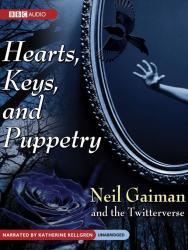
I’m all for interesting ways to write books, but using a game of “Twitter
telephone” is a new one for me. In fact, can we even call this book written
by Gaiman at all? Sure, he’s great at these types of modern fairy tales
(like Stardust , for instance), but he only got the ball rolling on this
story and let the internet write the rest of it. Granted, he was the one who
chose which segments to include next, to help guide it into some limited form
of coherence, so maybe he “wrote” it after all?
It’s not that Hearts, Keys, and Puppetry isn’t an utterly incoherent
story; it’s that it lacks focus at times. Plenty of interesting subplots
could have been explored but were quickly abandoned as the story switched
over to a different writer. I’m almost glad this book was as short as it
was because otherwise, I don’t know how much more of the plotline whiplash
I could take. Perhaps it’s a good thing for readers everywhere that stories
aren’t normally created 140 characters at a time. Not that it can’t be
done, but that the longer scope of the project is lost in the changing points
of view.
If anything, this book reminds me a bit of Forum Role-Playing stories. Each
individual controls a character, and everyone writes a segment at a time to
advance the plot. The problem with this approach (other than people not
committing to contributing) is that each individual has an idea in their mind
of where the story should go. Rarely do those ideas match with the rest of
the group. If this story were edited down to a few base ideas that Neil
Gaiman would then use to create a longer-form and coherent story, then maybe
this experiment would have merit. As it is right now, Hearts, Keys, and
Puppetry displays the true randomness of the internet.
A crowd-sourced story that has all the problems of a crowd-sourced story, I
give Hearts, Keys, and Puppetry 3.0 stars out of 5.
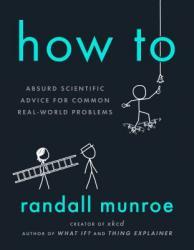
I’ve been a fan of Randall Munroe’s work for quite some time. This artist
of the xkcd webcomic certainly has a sense of humor that I appreciate, so I
looked forward to his latest book, How To: Absurd Scientific Advice for
Common Real-World Problems. While his previous book, What if? covered
hypothetical scenarios asked by the users of the internet, How To takes a
somewhat opposite approach by using extreme science to do the most basic
things imaginable. If you’re looking for simple answers, this isn’t the
book for you.
While it’s fun to think of the most complicated way to (for example) be on
time, often the joke goes on a little too long as the exact science behind
the absurdity is explained. There were times I felt I was reading a textbook
instead of a humorous treatise on how to cross a river. Even though I do
enjoy some extreme aspects of science, there is a limit to this enjoyment.
And perhaps this was because most of the science explained in this book felt
fairly rudimentary. Back of the envelope calculations can work for these
hypothetical situations, so it’s not like we needed the exact distance
George Washington could fling a silver dollar.
Despite its occasionally dry scientific explanations, the writing and
illustrations often had me laughing out loud. Many of the footnotes were
particularly hilarious. So while the content often felt like it was being
taken quite seriously, the slight tinge of humor always reminded me that the
whole exercise was to be as tongue-in-cheek as possible. If anything, this
book should give any reader a good sense of how we shouldn’t take the
simple solution for granted. After all, it’s probably much less
radioactive.
Some dry science covered in healthy layers of humor, I give How To 4.0 stars
out of 5.
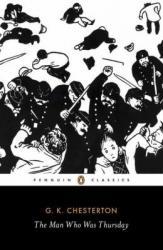
On the surface, The Man Who Was Thursday has all the markings of a witty thriller satire. Unfortunately, as the subtitle of this work is “A Nightmare,” things don’t necessarily stay coherent to the end. It’s not that The Man Who Was Thursday is terrible, but rather that it loses focus and becomes absurd the longer it continues. And perhaps that’s the greatest tragedy of this book: that it could have been a solid story if it didn’t devolve into a nightmare at the end.
I certainly liked plenty of aspects of the early parts of this book. Infiltrating an anarchist society with day-of-the-week codenames. The revelation that few members of said society were actually who they said they were. The conspiracy and twists as the protagonists and antagonists get flipped on their heads. Of course, this last bit is when things started going downhill. Perhaps it’s that odd British humor that influenced the weird bits, but the story probably could have done without all the randomness near the end. In fact, making the whole thing into a nightmare lessens the overall impact of the story, since there is doubt that any of it happened at all.
I’m sure that books like The Man Who Was Thursday require extensive footnotes and analysis to understand. I’m sure this book is assigned to English classes as an example of deep and thoughtful prose. The problem is that I’m mainly reading for entertainment. I don’t have the time to sit down and pore over all the analysis of a book like this. For my money, I think I’ll stick to the James Bond series for spies with code names infiltrating secret societies. At least then, I know the result is closer to reality than whatever this book contains.
A weird book that could have been an excellent thriller satire, I give The Man Who Was Thursday 3.0 stars out of 5.
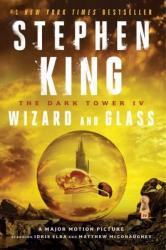
When I started reading Wizard and Glass, it became abundantly clear why The Waste Lands ended with a cliffhanger. While it would have been nice to have a short conclusion at the end of The Waste Lands, Wizard and Glass needed a small amount of framing. That way, it didn’t become a book entirely devoted to a flashback. Granted, the large majority of this book is a flashback, even to the point that I’d consider it to be a prequel. Fortunately, Roland’s backstory was something that desperately needed to be expounded upon in this series.
I know most writers are discouraged from using flashbacks, but in the context of a more extensive series, Wizard and Glass is an integral part of understanding how the Dark Tower universe works. Plus, Stephen King can get away with a lot since he’s so well established. In the end, this book works well because it is relational. Understanding Roland’s past and how he had loved and lost helped to make him not only more relatable but more human as well. Up until now, he was this stark, emotionless gunslinger whose only drive in life was to get to the Dark Tower.
While Wizard and Glass is undoubtedly one of the stronger books in the series, I felt there were a few elements that I didn’t like as much when compared to say, The Drawing of the Three (my current favorite in the series). There was plenty of sex in this book that, while somewhat necessary to the plot, was a bit over the top at times. Additionally, for a book that was as long as it was, I would think that more would have happened in it. As it is, there was a lot of talk about stuff happening, but no real action about it until near the end of the book. Still, I look forward to what will happen next.
A much-needed flashback/prequel for the Dark Tower series, I give Wizard and Glass 4.0 stars out of 5.
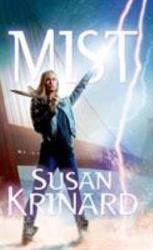
My knowledge of Norse mythology is passable at best. Granted, much of it I “learned” from movies like Thor (2011), so I understand that there’s an amount of fictionalization to my knowledge. That being said, Mist seemed to take this pop-culture understanding of Norse mythology and transplant it into modern-day San Francisco. While solidly in the New Adult genre (there is plenty of sex and allusions to it here), I can’t say that anything is interesting here in terms of story. Sure, there are a few things that happen, but they all seem to be alluding to much more exciting developments that won’t happen until later in the series.
One of my biggest qualms with this book was that I didn’t connect with the main character. Mist felt very “Mary Sue” to me. I found the more common elements of her existence (e.g., her employment, grocery shopping, laundry, etc.) were mentioned in passing but never given much weight to ground her in the reality of San Francisco. Additionally, there were plenty of illogical or unexplained actions that she took that I only assumed were to progress the story in the way that it was supposed to happen.
As for the action in this book, it is certainly hectic. At times, it’s also confusing as to what is precisely going on, even to the point of being action for action’s sake. Sure, it’s paced pretty well throughout, and it helps show the growth of the titular character, but I started skimming over these sequences after a while. In the end, maybe Norse mythology isn’t for me. Or at least I am not really into the modern-setting Norse mythology presented in books like this. It’s an interesting concept, but it feels too constrained to the urban and doesn’t allow more of the fantasy to shine through.
A passable New Adult Norse urban fantasy, I give Mist 2.5 stars out of 5.

This book was amazing. From a Christian standpoint, Lysa really gets into disappointments in the faith that I feel people are too shy to talk about. It is a very honest book with personal accounts of disappointments and fears. It isn't preachy, it is matter-of-fact. I have a hard time with general christian books because they can often times sugarcoat or completely ignore the stuff no one wants to talk about; so this book was very promising and refreshing!!

A short history of tractors in Ukrainian is a very entertaining tale of the vastly different experiences and perspectives of Ukrainian immigrants post-WWII to post-Cold War in Great Britain. It's a story that also explores the challenges of caring for aging family members. Well worth the read - it'll completely broaden your horizons. Also, it's very funny.
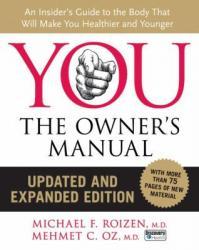
I wish this had been the book for my high school Health Class. The authors' light tone and sense of humor made the often dry subject enjoyable. I appreciated that these doctors tell you when the science is being heavily debated or is currently just a hypothesis. The title could just as easily be "What Western Medicine Has Learned So Far". That is absolutely a compliment to these doctors and their commitment to the idea that every patient is different and each of us is ultimately responsible for our own health care.
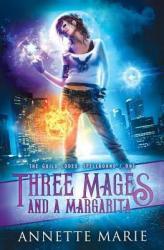
Pretty darn good! Light urban fantasy/paranormal with some romance, good pacing & character development, good grammar & proofreading (unlike this review), good action scenes. Really liked the reader for the audiobook. Not the depth of story of Briggs, Butcher, or Huff, but not just fluff waiting for the next romantic scene either. So glad our library is awesome and constantly offering new and interesting things.
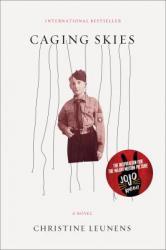
When I saw Jojo Rabbit (2019) nominated for Best Adapted Screenplay, I decided to give Caging Skies a read to see how close the adaptation came. After finishing this book, I can see why Taika Waititi ended his movie at the half-way point of the plot. This is mostly because this book only has half a plot. I can forgive a bit of blind enthusiasm of Austrian children who thought the Nazis were great, but I can’t forgive a teenager that gaslights (and, let’s be honest, rapes) a captive girl and tries to come off as the victim.
While taking a much more serious tone than the one presented in Jojo Rabbit, Caging Skies does a reasonably good job exploring themes of war, disability, and the sacrifices it takes to do what is right. Unfortunately, a lot of the lessons presented by the main character’s parents are entirely lost by the half-way point of the book when the war ends. Instead, we get a sick, overly sexualized, and outright twisted look into the head of a teenage boy who doesn’t realize the reason he’s keeping his victim hostage is exceptionally different from the reason his parents took her in to begin with.
I get that this book is supposed to be a bit more “literary” than something I’d pick up to read for entertainment. However, I found it weird how the story—told through the eyes of a teenage boy—never sounded like a teenage boy wrote it. Sure, there’s plenty of hormones on display as he grapples with having a hidden girl in his house. However, that’s more in the theme of the story instead of how the story was worded. Plus, any sympathy I would have had for the main character immediately evaporated when he chose to lie to the girl for far too long and keep her freedom from her, only managing to whine and complain how his freedom was limited by having to hide her from everyone.
An OK story that’s ruined by its second half, I give Caging Skies 2.0 stars out of 5.
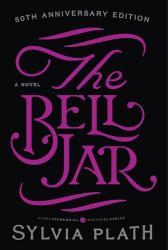
This semi-autobiographical novel is a searing portrait of mental illness. So dark and honest, it brings the reader in to the protagonist's descent into madness and her rise from it. The description of a mental hospital in the 50s was very interesting to me. This was before anti-depressants so many more people suffered there than suffer now. I was particularly fascinated by her description of electroconvulsive therapy. Overall a powerful novel by a one of literature's great writers.
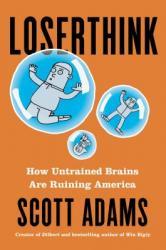
Loserthink is a fascinating book that anyone can learn something from. Scott Adams, the creator of Dilbert comics, has written several books that deal with a variety of topics such as the art of persuasion. In Loserthink, Adams talks about the ability to think critically to avoid "mental prisons" and ineffective ways of thinking he calls loserthink. Adams says that avoiding loserthink allows us to win arguments and speak more intelligently on complicated topics. I found Loserthink to be the perfect blend of humor and real-life application as well as very useful. While I don't agree with everything Adams says, he offers a balanced perspective of many political views and he gave several mechanisms that I wish to apply to my thinking. Overall, I enjoyed Loserthink and recommend it to any reader that wishes to be improve their intellectual prowess.
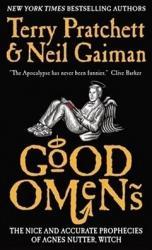
This book contains a captivating world in which angels and demons exist, and there are two in particular we follow who roam the Earth. Their goal: to stop the apocalypse. Their respective sides endeavor for the apocalypse to occur, but the angel Aziraphale and the demon Crowley have grown very fond of Earth.
The story follows several humans as well, including the Witchfinder Newton Pulsifer, the witch Anathema Device, and the Them. It also follows the story of the Antichrist, and the four horsemen. It is an absolutely spellbinding read.

Written creatively through letters, emails, and memos to and from characters, Where’d You Go, Bernadette by Maria Semple is the story of a woman struggling with her past. Bernadette Fox is a former architect whose claim to fame was also her downfall. Now vanished from the architecture world, she lives in Seattle with her successful husband and tenacious daughter, Bee, and does all she can to avoid social interaction. While Bernadette is preparing for the family trip to Antarctica that Bee has been anxiously awaiting, a confrontation with another parent sends her spiraling out of control, resulting in Bernadette’s sudden disappearance. This book explores the difficulties of mental illness and how our actions affect one another, told through many different perspectives. Bernadette’s opinionated personality will have readers laughing, and her insights are truly relatable. A rollercoaster ride of emotions, this novel is beautifully and creatively written to portray a woman’s imperfections and a daughter’s determination to find her mother. Teen and adult readers alike will connect with Semple’s characters and appreciate her sense of humor in Where’d You Go, Bernadette.

***THIS BOOK WAS RECEIVED FROM THE PUBLISHER***
There seem to be a few cardinal sins most writers are cautioned to avoid at all costs. Two of these sins are exposition dumps and “show, don’t tell.” While the entire book doesn’t necessarily fall into these pitfalls, Lightless spends a big chunk of its 300 pages in telling the reader about all the exposition to the story that’s currently playing out. Instead of reading an interrogation, I would have much rather seen the events that led to the current state of the solar system. On top of all this, I failed to care about any of the characters or their plights because this method of storytelling was so impersonal.
I’ll admit that I almost gave up reading this book right before it became interesting again. The ending does a pretty good job of re-invigorating the plot, but it might be a case of too little too late. Furthermore, not only were there plenty of weird logical leaps, accents that were told to the reader but not shown in dialect, and actions that didn’t make much sense, but there was almost too much coincidence in the appearance of certain characters. The fact that I thought it would have been a more interesting story if the System interrogator was the terrorist all along, coming to tie up loose ends, says something about the standard nature of the plot.
In the end, this book suffers from being the first of an intended trilogy, as well as being this author’s first work. The amount of exposition crammed into this book is merely a setup to something that’s likely more interesting to read, not that I’ll continue with this trilogy. Additionally, there were quite a few times where the awkward wording of a sentence or the repetition of a particular word pulled me out of the narrative. Finally, I felt it took way too long for the computer specialist to figure out what the problem was. The clues were evident almost from the start, but she only “got smart” about it when the plot demanded it.
An interesting climax that required an expositional slog to get to, I give Lightless 2.0 stars out of 5.

When it comes to biographies of famous artists, it can be difficult to separate their life from their life’s work. It is fascinating to understand the influences of an artist, especially when in the context of their creation. However, much of the ability to talk about the artist’s life depends on common knowledge of their artistic portfolio. For slightly more obscure artists, finding the balance between discussing their personal life and providing an explanation of their art can be a challenge. Schumann: The Faces and the Masks attempts to cover both Robert Schumann’s life and his musical pieces.
While revealing some of the more interesting secret codes in Schumann’s music in this book, the moments discussing the songs in detail seem to derail the whole narrative of the biography. Schumann’s life was fascinating enough as it was, with the drama involved in his marriage to Clara Wieck, as well as his involvement with several other famous musicians (like Mendelssohn and Brahms). Bringing in sections that basically amount to music theory might have been better suited in an appendix instead of fusing with the story as it progressed through his life.
Despite these jarring asides, Schumann’s life story is still interesting enough that I suggest anyone who is interested in Romantic composers, or even music in general, should give this book a read. The author does an excellent job of highlighting the ups and downs of this creative individual who suffered for his art almost as much as he suffered from his various conditions (an STI and a clear case of bipolar disorder). The fact that he had such a talented and devoted wife in Clara throughout his life is merely a testament to how forward their relationship was and how transformative she was on his life on the whole.
A fascinating biography with jarring bits of music theory, I give Schumann: The Faces and the Masks 3.5 stars out of 5.
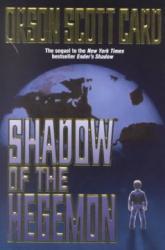
It’s almost fitting how the follow-on book in the spin-off series to Ender’s Game takes the same tactic as Speaker for the Dead and transforms itself into a completely different genre. While Speaker for the Dead and its sequels still maintained a level of science fiction for the Ender saga, Shadow of the Hegemon pivots into a political thriller with almost no hints of sci-fi to be seen. The strength of the characters helped make this transition relatively smooth, but it still highlights how these child-aged individuals hardly have any child-like qualities.
While the Shadow saga certainly needed to start out focusing on Bean, I did appreciate how Shadow of the Hegemon developed many of the supporting characters. For the first time in both series, I felt like the reader was able to know Petra and Peter while also seeing what Achilles was capable of accomplishing. The results of bringing back children war heroes to Earth had a logical feel to its progression, even if I didn’t really care much about southeastern Asian politics to really engage with the politics of the plot. That’s not to say the whole “cat and mouse” between Achilles and Bean wasn’t interesting; it just wasn’t what had brought me to this series in the first place.
Of course, having read the Ender saga first, I can already see the early ripples of how this side-series will start to wrap up. Now that Ender is less of a presence in the Shadow series, other characters finally have a chance to show what they can do. While I’ll reserve my predictions might change with what actually happens, I get the sense that Peter’s tenure as Hegemon changes the world just as Bean changes into some super-intelligent giant. I will admit that some of Orson Scott Card’s predictions from 2000 still seem plausible today, given the political climate, it’s clear that the author did his research before playing with the ever-important sci-fi “what if” scenario.
A political pivot from a well-known sci-fi series, I give Shadow of the Hegemon 4.0 stars out of 5.

This book is an insider's look at the military establishment, particularly the elite Navy forces. Johnson overcomes so much to become a fighter pilot only to be alienated by the Navy's most elite squadron. Told with honesty, Johnson's grit is something to be admired.
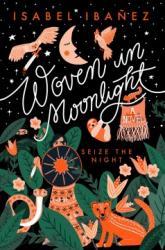
Ximenia Rojas has been the decoy for Condesa Catalina ever since the usurper Atoc overthrow the Illustrarians a decade ago. Ximenia's family, along with the Condesa's, perished during the civil war, and Ximenia and her fellow Illustrians want revenge. When Atoc summons the Condesa to the palace to be his bride, Ximenia goes in Catalina's place and uses her weaving magic to send messages to the Illustrians via tapestry. With only eight weeks before the wedding, Ximenia must find intel about a magical gem that is the Illustrian's only hope.
My literary 2020 is off to a great start with this gem of a historical fantasy YA novel! I went in with fairly low expectations as 2019 was, on the whole, not a great year for YA fantasy. This was very good and felt like something of a course correction. The "historical" aspect covers Bolivian politics and the introduction of cocaine, at least somewhat (I know nothing about Bolivia and the eARC didn't have an author's note at the end, but the author does reference her two Bolivian parents) and deftly weaves a story of magic, moonlight and betrayal. The moon magic is subtle, but well utilized. Ximenia's ability is, for lack of a better phrase, quite cool. The author took a familiar story of rebellion and a headstrong girl and combined those seemingly stale tropes with magical realism and Bolivian flavor to create a book that felt like something new. The romance was earned. The main character grows a lot throughout the course of the book. Ximenia's story is tied up by the end, but there's an intriguing jungle based thread that's left dangling (not a spoiler!) that I'd be willing to bet will be a second book. I'll read it.
Also, I dare you to read this book and not want some tasty Bolivian treats. The food sounds amaaaaaaaaaaazing and it's mentioned a lot.
TLDR: Woven in Moonlight takes a familiar tale of revolution and spices it up with excellent character development and creative magical realism. I'm having trouble thinking of something to compare it to, because I like it better than most books that I've read that are similar (The Bird King by G. Willow Wilson for example - this is in the same zone, but I enjoyed it a lot more). Recommended for readers who like their fantasies to be revolutionary (ha) with a strong female lead and a touch of magic. 4 stars - I really liked it.
Thanks to Netgalley and Page Street Books for the eARC, which I received in exchange for an unbiased review. Woven in Moonlight is available for purchase or you can put your copy on hold today!
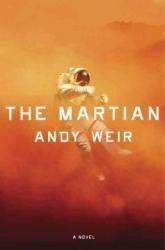
After a NASA crew member is left behind on planet Mars, he has a huge to-do list. First, come in contact with NASA to prove he is alive, don't starve, don't die, then make it home alive. I'm not a huge fan of any science fiction type book, however, this was indeed an exception. I loved the perspectives the author chose to include, and the humor he shot into his characters gives the story personality. I suggest this book to an eighth grade audience; there is some inappropriate language and all of the science attributes are complex to understand. I strongly suggest to you this book if you want to be left on the edge of your seat with every new chapter, right up until the end.


